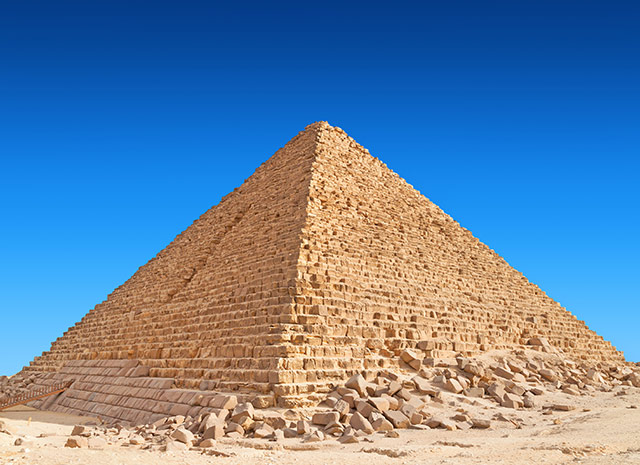Mysterious underwater pyramid off Japan could rewrite ancient history
04/10/2025 / By Willow Tohi

- Peter Kirby reveals a long-running, secretive program involving aerial spraying of toxic materials (chemtrails), likening it to the WWII-era Manhattan Project. The CIA, private corporations and government agencies are key players, using coal fly ash (rich in harmful chemicals) for large-scale weather manipulation.
- Aerial spraying dates back to the 1940s, documented in books like Clouds of Secrecy and In the Name of Science. The program evolved from military weather control projects (e.g., MKUltra) and uses electromagnetic energy, influenced by Nikola Tesla’s research.
- The CIA suppresses public awareness through media manipulation (e.g., Operation Mockingbird) and corporate ties (e.g., Dresser Industries, Halliburton). Ex-CIA director John Brennan openly supported atmospheric spraying, confirming agency involvement.
- Stratospheric aerosol injection (SAI) and particulate dispersal worsen wildfires (e.g., California), harm ecosystems and threaten human health. Particulates act as incendiaries, drying forests and increasing fire risks, while also contaminating soil and water.
- Kirby demands a national ban on geoengineering and a grand jury investigation into involved entities (MIT, Raytheon, UN agencies). The program endangers food security, public health and the environment, requiring urgent public scrutiny and legal action.
A submerged stone structure off the coast of Japan, known as the Yonaguni Monument, has reignited debates about the origins of ancient civilizations. Discovered in 1986 by local diver Kihachiro Aratake, the 90-foot-tall formation, with its sharp-angled steps and flat terraces, has puzzled researchers for decades. If confirmed as man-made, this underwater “pyramid” could predate the Egyptian pyramids and Stonehenge by thousands of years, potentially rewriting the history of human engineering and architecture.
Discovery and initial reactions
The Yonaguni Monument, located 82 feet below sea level near the Ryukyu Islands, was initially dismissed as a natural formation. However, its striking resemblance to a man-made structure has led to intense scrutiny and debate. Photojournalist Ken Shindo, who works for the influential Kyodo-Tsushin News Agency, has been a vocal proponent of the monument’s artificial origin. Shindo, who has spent years documenting the site, is convinced of its man-made nature. “Some people say it’s a freak of nature, but they haven’t spent time on it like I have. I’m absolutely certain it’s man-made,” Shindo stated.
Scientific investigations and controversies
Professor Masaaki Kimura, a marine seismologist at the University of Ryukyus, has been studying the Yonaguni Monument since 1994. His extensive research, including surveys, sampling and measurements, suggests that the structure was hewn out of solid bedrock when the site was above water. Kimura’s findings indicate that the monument could be over 10,000 years old, placing its construction during the last Ice Age. “If sea-level rise were the only factor to take into account, then provisional calculations would indicate a date of inundation of around 10,000 years ago,” Kimura explained.
However, not all experts agree. Dr. Robert Schoch of Boston University, a geologist, argues that the monument is a natural formation. “When viewing photographs of the Yonaguni Monument, many people immediately have the impression, due to the regularity of the stone faces of the steps and the sharp angles made by the rock, that this is an artificial structure,” Schoch admitted. “However, by no means do I feel that this is an absolutely closed case.”
The debate on the Joe Rogan experience
The debate over the Yonaguni Monument gained widespread attention after a heated discussion on the Joe Rogan Experience podcast. Author Graham Hancock, known for his research on lost civilizations, and archaeologist Flint Dibble presented opposing views. Hancock, who believes the monument is man-made, pointed to photographs showing what he described as human-made arches, megaliths, steps, terraces and a carved rock “face.” “To me, Flint, it’s stunning that you see it as a totally natural thing, but I guess we’ve just got very different eyes,” Hancock said.
Dibble, on the other hand, remained skeptical. “I’ve seen a lot of crazy natural stuff and I see nothing here that to me reminds me of human architecture,” he countered. The exchange highlighted the ongoing controversy and the need for further scientific investigation.
Implications for ancient history
If the Yonaguni Monument is indeed man-made, it would challenge the current understanding of ancient human capabilities. The conventional wisdom holds that the ability to construct large, complex structures evolved alongside the development of agriculture around 12,000 years ago. However, the Yonaguni Monument, if confirmed as artificial, would suggest that advanced engineering skills existed much earlier.
This discovery could also provide insights into the lost civilizations that may have thrived during the last Ice Age. The monument’s potential age aligns with other ancient structures, such as Göbekli Tepe in Turkey, which dates back to around 9500 BC, and Gunung Padang in Indonesia, believed to be over 16,000 years old. These findings collectively challenge the notion that early human societies were primitive and incapable of sophisticated construction.
Conclusion
The Yonaguni Monument remains a tantalizing enigma, with its origins still hotly debated. Whether it is a natural formation or a man-made structure, the monument continues to captivate researchers and the public alike. If proven to be artificial, it could rewrite the history of ancient civilizations and offer a glimpse into a lost world of advanced engineering and architecture. As the debate continues, the Yonaguni Monument stands as a testament to the enduring mysteries of our past, inviting further exploration and discovery.
Sources include:
Submit a correction >>
Tagged Under:
ancient history, Archaeology, cool science, discovery, Egyptian pyramids, Japan, real history, research, Stonehenge, underwater pyramid, Yonaguni Monument
This article may contain statements that reflect the opinion of the author
RECENT NEWS & ARTICLES
COPYRIGHT © 2017 DISCOVERIES NEWS



















